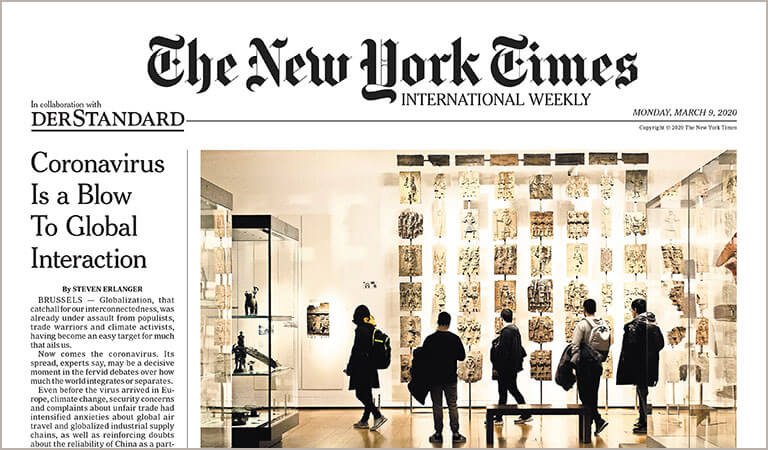The New York Times: A Modern Icon in Journalism and Beyond

Few media outlets in the world carry the same weight, prestige, and global recognition as The New York Times. Often referred to simply as the “NYT,” this American newspaper has built an empire on accuracy, storytelling, innovation, and integrity. It’s more than a newspaper—it’s a cultural compass, a historical record, and in many ways, a daily part of life for millions around the globe.
Whether you’re checking the headlines, solving the crossword, diving into a feature, or cooking something from NYT Cooking, chances are you’ve interacted with the New York Times in some shape or form. But how did this publication become such a force? Why does it continue to dominate in an age where digital media reigns supreme? And what does the future hold for such a historic institution?
Let’s take a deep dive into the legacy, evolution, and cultural relevance of The New York Times.
The Origins of The New York Times: From Humble Beginnings to Global Reach
The New York Times was founded in 1851 by Henry Jarvis Raymond and George Jones under the original name New-York Daily Times. At a time when newspapers were often filled with sensationalism and partisan spin, Raymond and Jones set out to deliver a more moderate and fact-based approach to news. This mission quickly distinguished the Times from many of its competitors.
In 1896, Adolph S. Ochs bought the paper and rebranded it with the slogan that still appears on the front page today: “All the News That’s Fit to Print.” This statement wasn’t just catchy—it was a promise to readers that the content would be serious, trustworthy, and substantial. Under Ochs’ leadership, the NYT grew in both reputation and reach, eventually becoming the newspaper of record in the United States.
Through world wars, economic depressions, the civil rights movement, and global crises, The New York Times has remained at the forefront of journalism. Its legacy is rooted not only in reporting but in influencing how history is understood. And unlike many of its contemporaries, it never wavered from its commitment to comprehensive, ethical journalism.
Pulitzer Prize-Winning Journalism and the Power of the Written Word
One of the most striking aspects of The New York Times’ legacy is its long-standing reputation for award-winning journalism. The newspaper has earned more than 130 Pulitzer Prizes—the highest honor in American journalism. These awards span categories like investigative reporting, commentary, international reporting, and public service.
The Times is perhaps best known for publishing the Pentagon Papers in 1971, a classified government study that revealed deception by the U.S. government in the Vietnam War. This bold act sparked a significant legal battle with the Nixon administration, eventually ending in a Supreme Court ruling that favored the paper’s right to publish. It was a landmark moment that emphasized the First Amendment and press freedom in America.
More recently, the NYT’s investigations into Harvey Weinstein’s sexual abuse—which helped launch the #MeToo movement—earned wide acclaim and changed the cultural landscape forever. Stories like these showcase not only the bravery of the reporters involved but also the institution’s unwavering dedication to accountability journalism.
The NYT in the Digital Era: Reinventing the Newspaper Model
When the internet began shaking the foundations of traditional media in the early 2000s, many newspapers struggled to stay relevant. Print sales declined, ad revenue plummeted, and legacy media outlets scrambled to find new ways to survive. The New York Times faced these same challenges—but it responded with a bold strategy.
In 2011, the NYT introduced a digital paywall, requiring readers to subscribe to access full articles. At the time, the move was controversial. Many critics doubted that people would pay for news when so much was available for free. But the gamble paid off. Today, the New York Times boasts more than 10 million digital subscribers, with revenue from digital content surpassing that of print.
Beyond subscriptions, the NYT has embraced multimedia storytelling. It offers interactive graphics, podcasts like The Daily, immersive video documentaries, and even virtual reality features. This evolution has not only modernized the newspaper but positioned it as a leader in the digital journalism space.
More Than News: Exploring the NYT’s Diverse Content Ecosystem
While the New York Times remains a top-tier source for breaking news and political analysis, its influence extends far beyond hard journalism. In fact, much of its success in the digital age can be attributed to its diverse content offerings, which appeal to a wide and varied audience.
NYT Cooking
One of the most successful spin-offs has been NYT Cooking, a subscription-based platform offering thousands of recipes, expert cooking guides, and instructional videos. It’s a hit with home cooks and foodies alike, and has built a community of readers who engage with the brand for daily meal inspiration rather than just news.
NYT Games
Equally impressive is the NYT’s suite of digital games. The crossword puzzle—a tradition since 1942—has grown in popularity, especially under the editorship of Will Shortz. Add to that newer hits like the Spelling Bee, Wordle (acquired in 2022), and the Mini Crossword, and you have a games section that rivals many standalone apps.
Arts, Style, and Book Reviews
The NYT’s Arts and Style sections offer world-class commentary on music, film, fashion, and design. Its book reviews remain among the most respected in the industry, and the NYT Best Seller list is still considered a gold standard for authors and publishers worldwide.
Global Influence and Cultural Footprint
The influence of The New York Times reaches far beyond American borders. Its international reporting and foreign bureaus are among the most comprehensive in the world. Whether it’s covering war zones, global diplomacy, or cultural shifts, the NYT consistently provides nuanced, on-the-ground reporting that helps readers understand complex global issues.
The paper also plays a pivotal role in shaping public discourse. Whether it’s an op-ed by a sitting president, a profile of a cultural icon, or a deep dive into climate science, the NYT doesn’t just inform—it leads conversations. In a world awash with misinformation and polarized media, the Times remains a trusted, centrist source for millions.
Moreover, universities, libraries, researchers, and policymakers frequently reference the NYT in academic and legal contexts. It’s not just read—it’s studied.
Criticism, Controversies, and Self-Reflection
Despite its prestige, the New York Times isn’t immune to criticism. Over the years, it has been accused of bias, elitism, and missteps in editorial judgment. Some argue it leans too liberal, while others criticize it for giving space to conservative views in an attempt to appear balanced.
Certain headline choices, op-eds, or story placements have sparked public backlash, particularly on social media. However, the NYT is generally transparent when it makes mistakes. It publishes corrections, clarifies reporting, and even hosts public editors and ombudsmen to address reader concerns.
What’s admirable is its willingness to evolve. In recent years, the NYT has made conscious efforts to diversify its newsroom, improve representation in its content, and enhance ethical reporting standards.
Final Thoughts: Why The New York Times Still Matters
In an age dominated by social media soundbites, clickbait headlines, and information overload, The New York Times stands tall as a model of thoughtful, impactful journalism. Its strength lies in its credibility, its range, and its ability to adapt without losing its identity.
More than just a newspaper, the NYT is a living, breathing chronicle of our times. It reflects who we are, what we care about, and where we’re going. Whether you’re reading about a geopolitical crisis, trying a new pasta recipe, or solving a Friday crossword, you’re engaging with something that has depth, intent, and journalistic integrity.
For anyone seeking to be informed, challenged, or inspired—the New York Times is still one of the best places to start.



